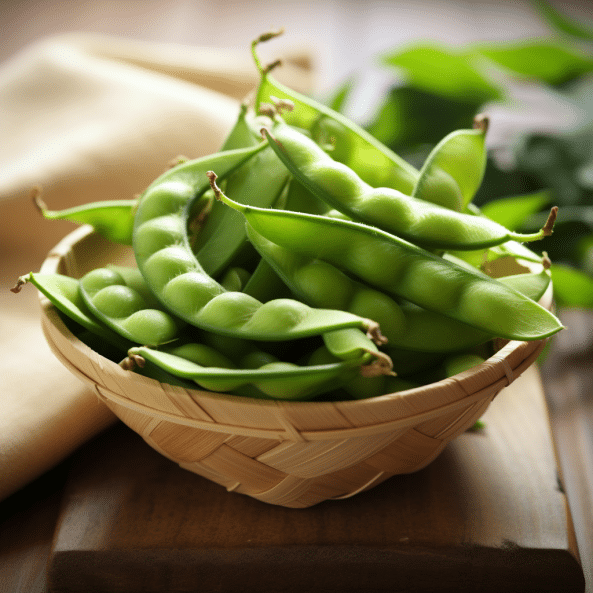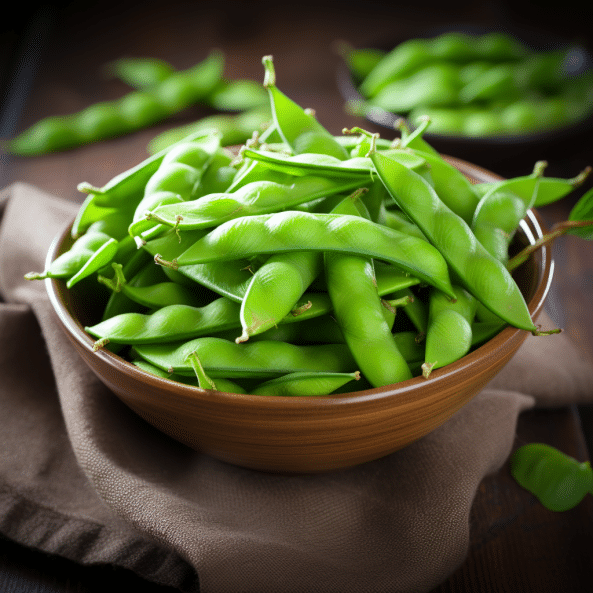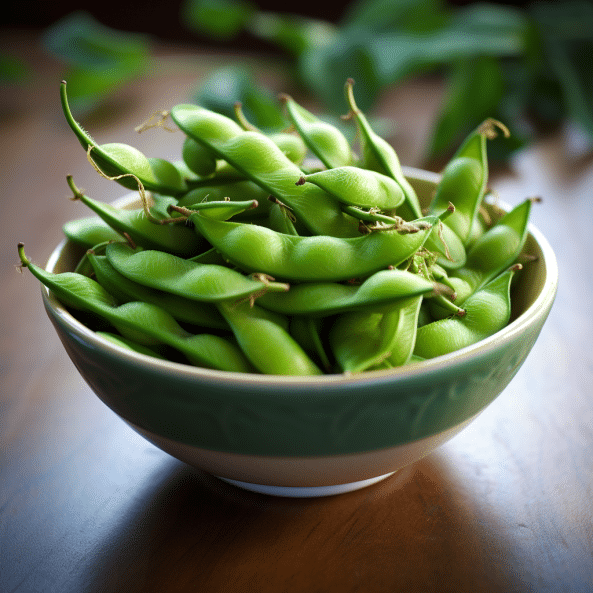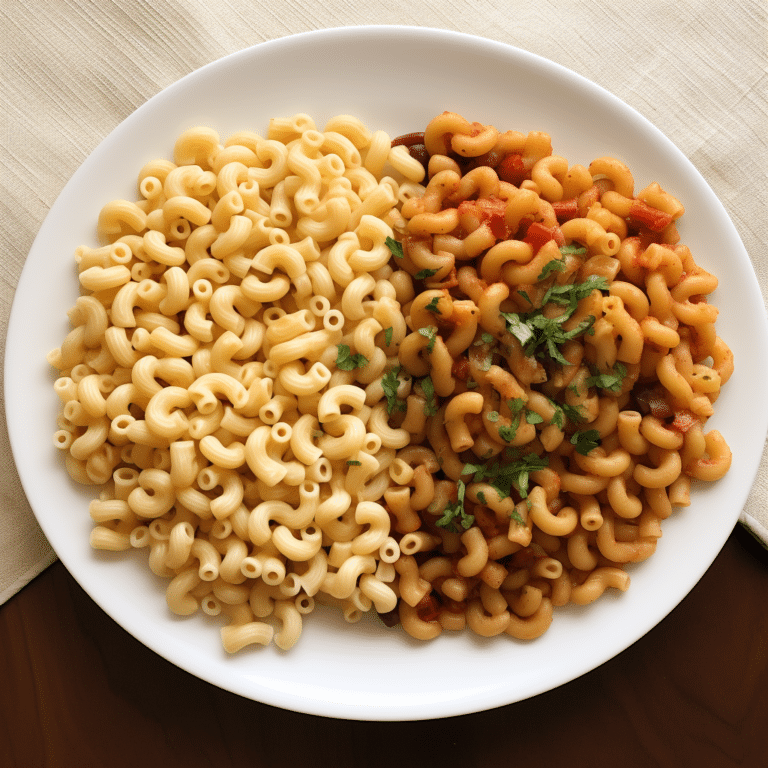Edamame vs. Green Beans: Origins, Nutrition, and Health
Edamame vs. Green Beans: Edamame is eaten by removing the pod to get to the bean, while green beans have an edible pod. They vary in where they come from, how they’re prepared, their nutrition, and health benefits. This article explores these differences for a better understanding.

Edamame Vs. Green Beans: Overview
Origin
Edamame originated from China and East Asia in the 1700s. They are popular in many Asia regions, especially Japan and America.
Green beans originated from Central America, specifically Peru and Mexico. They have also been widespread, becoming a popular dish in many parts of the world.
Nutritional Facts
Edamame and green beans have different nutrients. Edamame is high in thiamin, folate, iron, protein, calcium, lutein, and zeaxanthin. On the other hand, green beans are high in alpha and beta carotene and Vitamin C.
Edamame
One cup of 155 grams of edamame contains; 188 calories, 14gms of carbohydrates, 8.1gms of fat, 18gm of proteins, 9.5mg of Vitamin C, 98mg of calcium, 3.5mgs of iron, and 99mg of magnesium. It also contains 670 mg of potassium, 0.3 mg of thiamin, 0.2mg of riboflavin, 14 mg of niacin, 0.6 mg of Vitamin B5, 482 ug of folate, and 41 ug of Vitamin K.
Green Beans
One cup of 100 grams of green beans contain; 31 calories, carbs-7gm, fat-0.2gm, protein-1.8mg, Vitamin C-12mg, calcium-37 mg, iron -1mg, magnesium-25mg, potassium-211mg, and thiamin- 0.08mg. They also contain; riboflavin-0.1mg, niacin-0.7mg, Vitamin B5-0.2mg, folate-33 ug, and Vitamin K-43ug.
Preparation and Serving
Edamame can be sauteed, microwaved, boiled, branched, or steamed. They are often eaten as a snack. To prepare them, unshell and get the edible bean inside. Cook using your preferred method and serve with soups, stews, pasta, noodles, and salads.
Green beans, like any other bean, contain lectins that may cause gas and abdominal discomforts if not well cooked. You can boil, steam, roast, or stir fry green beans. Wash your beans thoroughly and cut the sharp ends before cooking.
Health Benefits
Edamame and green beans are loaded with nutrients and are therefore beneficial to the body.
Edamame
- They are rich in minerals and vitamins that help keep the body healthy.
- They may help lower cholesterol levels. The soluble fiber, proteins, and antioxidants in edamame beans can help fight the bad cholesterol responsible for unhealthy conditions such as heart diseases and obesity.
- Edamame has a high low glycemic index and may help control blood sugars. This means eating these beans cannot raise the blood sugars rapidly, which is essential in persons with diabetes 2.
- Edamame may help fight some types of cancers. They contain antioxidants that help fight free radical cells that cause the growth of cancerous tumors.
- They might help prolong life.
- They help reduce menopausal symptoms, including hot flashes, mood swings, and sweating.
- Edamame may help reduce osteoporosis and loss of bone mass. The high amounts of calcium in these beans aid in bone health and maintenance.
Green Beans
- Flavanols, Vitamin C, kaempferol, and quercetin are antioxidants in green beans. Antioxidants battle free radicals that damage healthy cells and cause diseases.
- They have high amounts of soluble fibers that are important in fighting bad cholesterol and thus reduce the risks of heart diseases.
- Green beans provide folate and iron for pregnancy and child development. The mother’s health before and after birth depends on these nutrients’ anemia prevention.
- Green beans are a good source of Vitamin k and calcium that help bone health, reducing the risk of osteoporosis.
- They ease depression. Folate lowers homocysteine, which blocks serotonin, dopamine, and norepinephrine, which affect mood, sleep, and hunger.
- The chlorophyll in green beans might help prevent the growth of cancer cells in certain types of cancers.
- They may help promote gut health.
Side Effects
Though loaded with nutrients, consuming edamame and green beans may cause undesirable effects on some people.
Edamame
Edamame may trigger breast and bladder cancers. Isoflavone mimics estrogen, a hormone that, if produced in excess, triggers the growth of breast and bladder cells.
It is therefore advisable to consume edamame moderately if one has other predisposing factors. It could also lead to an underactive thyroid.
Phytoestrogen found in edamame is a risk for people with kidney disorders. It could trigger kidney failure.
Edamame contains high amounts of oxalate, a component of kidney stones, which may increase the risk of their formation.
Green beans
Green beans contain high levels of Vitamin k, which might interfere with blood thinners. You may consider minimizing your consumption of green beans if you are on blood thinning medication.
Phytic acid in green beans may bind certain minerals and make it hard for the body to absorb them.
They contain lectins that cause gas and abdominal discomforts.

Storing Green Beans And Edamame
Green beans and edamame should be stored in the refrigerator or freezer. Place them in an airtight container or plastic bag. They can last in the fridge for 2 to 3 days and in the freezer for 2-3 months.
In conclusion, green beans are smooth, soft, and long immature pods of common beans also referred to as snap, string, or french beans. Edamame is short and fibrous immature pods of soybeans. Green beans are eaten unshelled, while edamame is unshelled to remove the edible beans.






